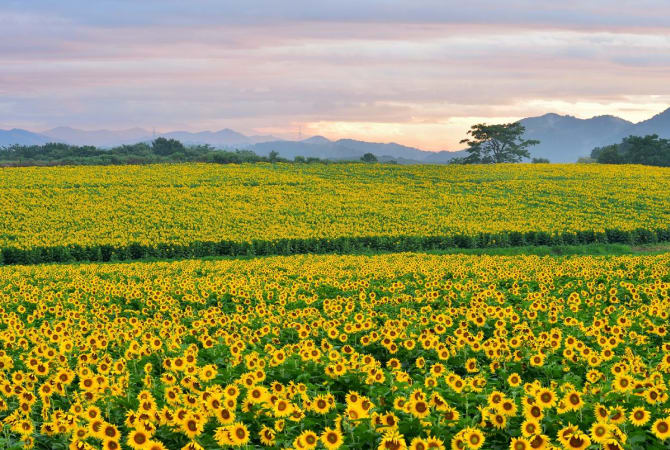Catch Late-Blooming Cherry Blossoms at These 5 Stunning Spots
Springtime in Japan is an extra special season for many because of one thing: sakura, or cherry blossoms. Winter’s snow-melted cherry trees begin to bare their beauty with their flowers, making for a lovely and dreamy sight. If you’ve already planned your spring trip and may be missing the general peak season of cherry blossoms, fret not because there are areas in Japan where you can still catch late-blooming cherry blossoms.
Disclaimer: Please be advised that the blooming period of cherry blossoms is subject to annual weather conditions. The seasons referenced in this article are intended as general guidelines.
1. Admire the majestic view of cherry blossoms in Hirosaki Park, Aomori Prefecture (mid-April – early May)
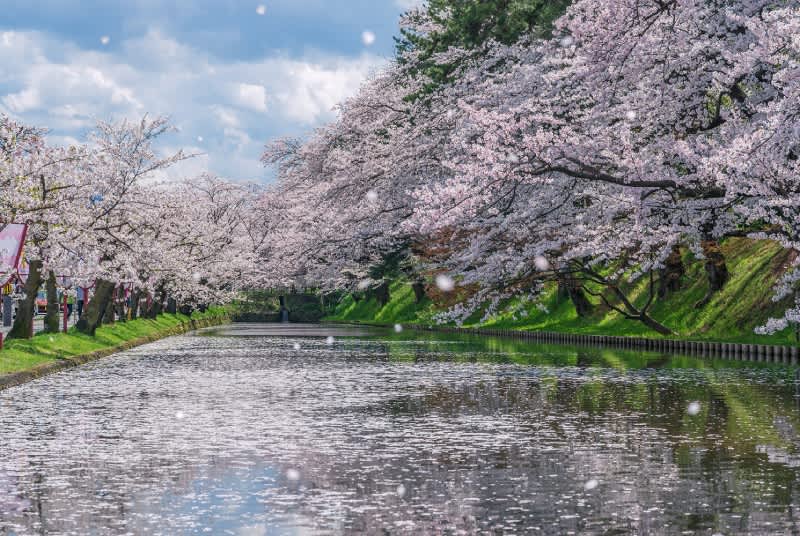
Boasting about 2,600 cherry trees of 52 varieties, Hirosaki Park in Aomori Prefecture has secured its spot on the list of Japan’s Top 100 Cherry Blossom Viewing Sites. But beyond the vast amount of trees, what makes Hirosaki Park’s cherry blossoms unique are how they are pruned with the same technique Aomori farmers use on their apple trees, resulting in more buds than other cherry trees elsewhere.
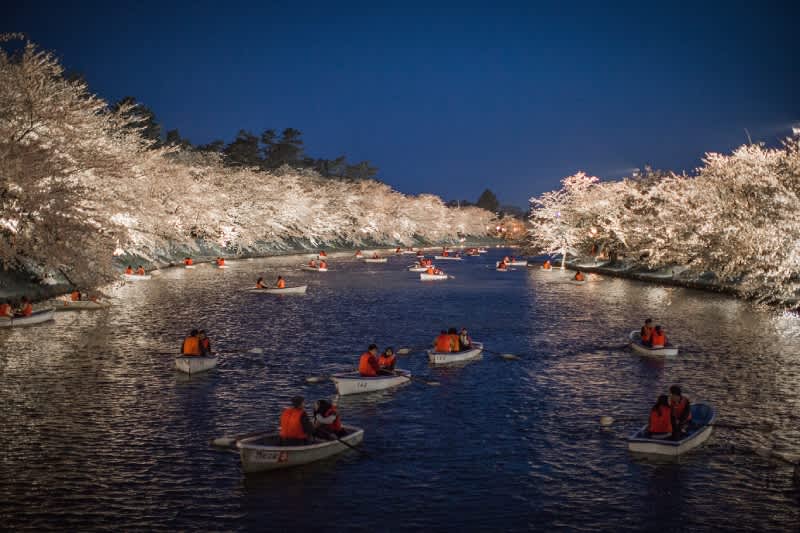
The 2025 Hirosaki Cherry Blossom Festival will be held from April 18 to May 5.
Every year, the park holds the Hirosaki Cherry Blossom Festival from around late April to early May. Sights during the festival you would not want to miss include the Sakura Tunnel, the Shunyobashi Bridge, the yozakura - which are illuminated cherry blossoms in the evening, and the hanaikada - flower rafts that form when petals fall on the surface of ponds or rivers. Visitors can rent a small boat to pass through the west moat to see these beautiful sights.
Of course, don’t forget to marvel at the majestic Hirosaki Castle Keep, the symbol of Hirosaki Park itself and one of the few Japanese castles preserved to its original structure.
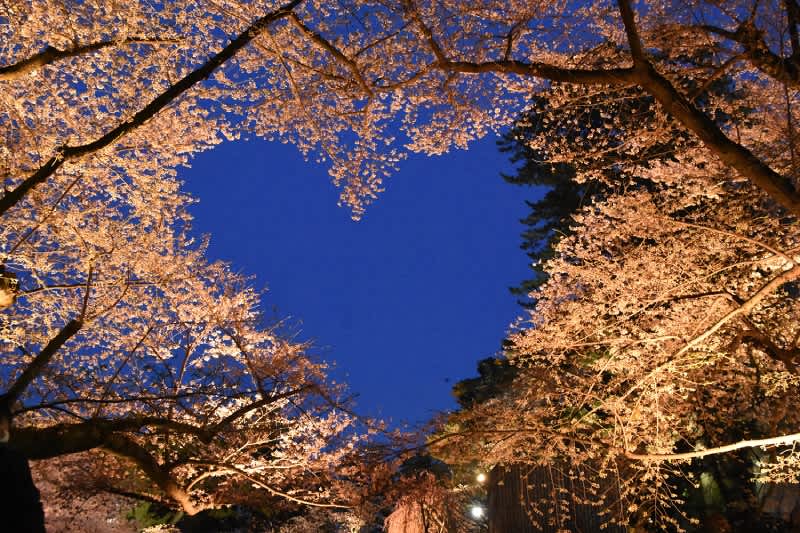
Photo Credit: ©︎Hirosaki City
Another must-see area in the park is the popular spot for picture-taking known as the Cherry Blossom Heart, wherein the branches of two different trees form the shape of a heart, creating a more romantic view for visitors to admire and take photos.
Hirosaki Park (Website)
Address: 1 Shimoshirogane-cho, Hirosaki City, Aomori Prefecture 036-8356
Access: From Tokyo, take the Tohoku Shinkansen from Tokyo Station to Shin-Aomori Station. From there, take the train to Hirosaki Station. Then, take a 15-minute bus ride with the Dotemachi Loop Bus, then alight at the Shiyakusho-mae bus stop.
*Note: Some areas of the park charge admission fees. Visit this site to know more.
2. Stroll under the full bloom of cherry blossoms in Kakunodate, Akita Prefecture (mid-April – early May)
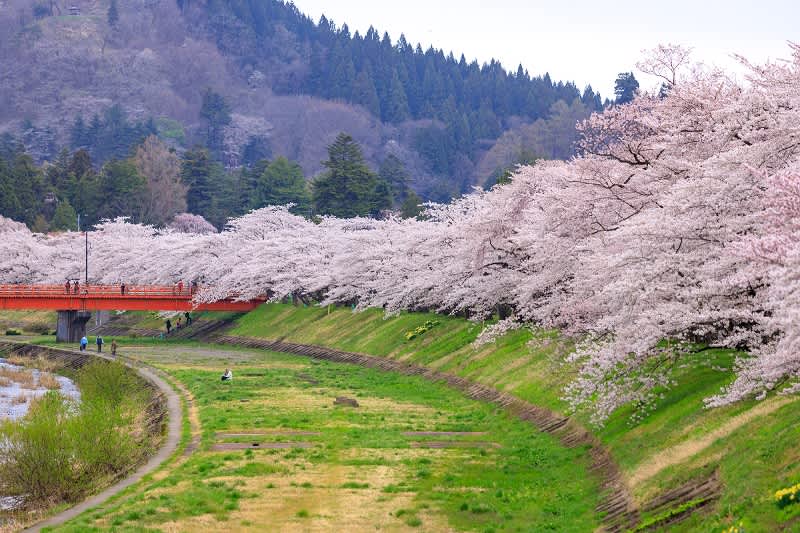
Yoshino cherry blossoms along the Hinokinai River.
Known as the “Little Kyoto of Michinoku”, Kakunodate in Senboku, Akita Prefecture is another top hanami (flower-viewing) spot found in the Tohoku region. This town offers picturesque sceneries every spring, with the flowers at their peak during the Kakunodate Cherry Blossom Festival, typically held every late April to early May.
One of Kakunodate’s well-known cherry blossom spots is Hinokinai River. Around 400 Yoshino cherry trees spanning around two kilometers stretch by the river, allowing a cool and pleasant walk along the embankment. When the flowers are in bloom, the water takes on a pinkish hue, adding to an already delightful sight.
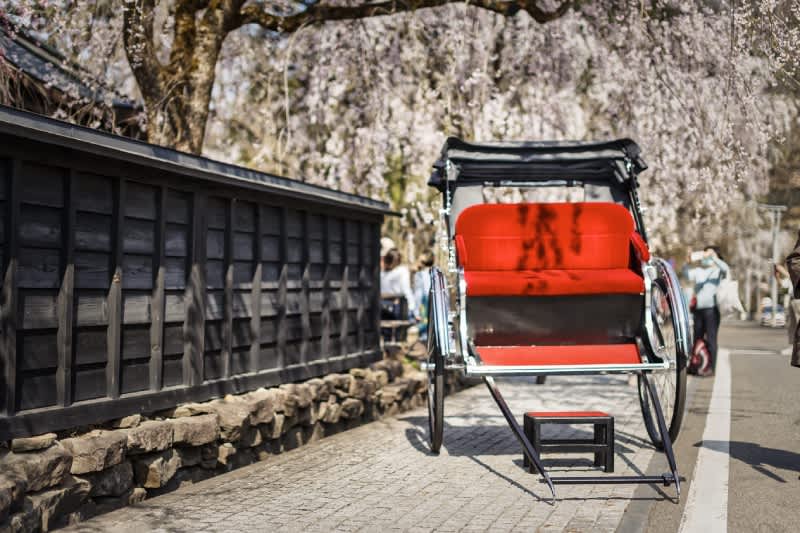
Photo Credit: Akita Prefecture Tourism Promotion Division
Not far from the river, you can find Bukeyashiki Street with its magnificent long lines of shidarezakura or weeping cherry trees.
An old samurai town, Kakunodate had its cherry trees transported by samurai families from Kyoto in the 17th century. But not only the trees remain; Kakunodate has largely been preserved since its development and peak during the Edo period (1603-1867), with some samurai homes still standing upright as if no time has passed.
Visitors can also bring home a piece of their Kakunodate trip by grabbing some souvenirs, such as the traditional sweets in the region called “morokoshi”, made from refined azuki bean flour.
Kakunodate Cherry Blossom Festival (Website)
Hinokai River
Address: Kakunodate-machi, Senboku City, Akita Prefecture
Access: From Tokyo, take the Akita Shinkansen and alight at Kakunodate Station. From there, take a 15-minute walk to reach the majestic lines of weeping cherry trees.
Bukeyashiki Street
Address: Omotemachikamicho, Kakunodate-machi, Senboku City, Akita Prefecture
Access: From Kakunodate Station, take a 15-minute walk to reach the street.
3. See cherry blossoms near Hokkaido’s only castle at Matsumae Park (late April – late May)
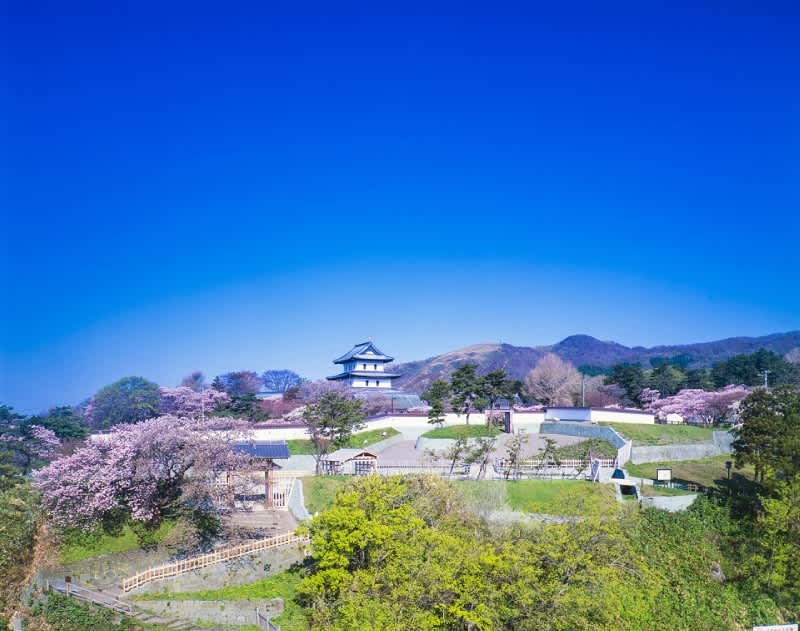
Another contender in the list of Japan’s Top 100 Cherry Blossom Viewing Sites is Matsumae Park in Matsumae Town, Hokkaido. The park is another area with an impressive cover of cherry blossoms, numbering over 10,000 trees of more than 250 varieties. With this expanse, just imagine the scent of the flowers wafting through the air when you visit during the blooming season, which lasts longer here than usual given the sheer variety of flowers in the park. A notable cherry tree in the park is the 300-year-old Kechimyaku-zakura, the parent of “Naden” trees there.
Every year around late April, the park holds the Matsumae Cherry Blossom Festival to celebrate the blooming of the flowers, complete with food and live music. The Matsumae Sakura Museum also stands within the park, which stores information about the development of the cherry blossoms.
The area also has the historic Matsumae Castle (also known as Fukuyama Castle), first built in 1606 and is Japan’s northernmost castle and the lone Japanese castle in Hokkaido. The castle sits atop the hill, giving a glimpse of the entire Matsumae area. It also houses museum displays of artifacts belonging to the Matsumae clan.
Other structures found within the park visitors can explore are historic ruins such as the Hogenji Temple and Aunji Temple, some of which were built even before Matsumae Castle’s construction.
You May Also Like
Matsumae Park (Website)
Address: Matsushiro, Matsumae-cho, Matsumaeshiro, Hokkaido Prefecture 049-1511
Access: From Sapporo Station, take the Hokuto Limited Express to Hakodate Station. Then, ride the South Hokkaido Railway and alight at Kikonai Station. From there, the park is a 95-minute bus ride.
4. Witness the enchanting view of cherry blossoms at Sakura no Sato Park, Shizuoka Prefecture (late September – early May)

Photo Credit: ©Ito City Tourism Division
Sakura no Sato Park in Ito, Shizuoka Prefecture is the definition of postcard-worthy: just pure heavenly sights of clusters of cherry trees and their blossoms backdropped by the cinder cone Mt. Omuro. When it comes to longevity, rest assured that visitors have a higher likelihood of catching the blossoms as the cherry blossom season here lasts eight months, from late September to early May.
The park boasts 1,500 cherry trees with 40 varieties blooming at different times, making it a popular destination for photographers and hikers. You can catch these varieties depending on the season in which you visit, including Somei-Yoshino cherry blossoms during spring, accompanied by illuminations at night.
You can also find a dog run in the park, wherein the adjacent lift of Mt. Omuro allows small dogs, making it popular for pet owners who wish to enjoy the view of pink hue cherry blossoms along with their beloved pets.
Sakura no Sato Park (Website)
Address: 1317-4 Futo, Ito City, Shizuoka Prefecture 413-0231
Access: From Tokyo, take the Tokaido Shinkansen to Atami. Then, change to the Izu Kyuko Line to Izu-Kogen Station. From there, take the Tokai bus and alight at the Izu Shaboten Park bus stop. The park is a 10-minute walk from there.
5. Marvel through the picturesque scenery in Shiroyama Park, Gifu Prefecture (mid-April)

Photo Credit: HIDA-TAKAYAMA Tourism & Convention Bureau
Located in the heart of Takayama City in Gifu Prefecture, Shiroyama Park is a tranquil spot surrounded by rich nature. Known for its historic significance, the remnants of the former Takayama Castle - including stone walls and other historical structures - can be seen within the park.
A pleasant walking trail circles around Shiroyama, allowing visitors to take in the scenery while occasionally catching glimpses of cherry blossoms, which bloom from mid-April onwards, along the way. You can also enjoy a scenic view overlooking the city from the park.
The 24.6-hectare park, the largest in the city, is located on a hill. It also boasts playgrounds, open plazas, a restaurant serving local food, and offers a family-friendly atmosphere where visitors can enjoy the sight of late-blooming cherry blossoms.
For those who may have missed the first wave of cherry blossom season, Shiroyama Park also offers a quiet and peaceful opportunity to enjoy some blooms without the usual crowds of early April.
Shiroyama Park (Website)
Address: 1-1 Shiroyama, Takayama City, Gifu Prefecture 506-0822
Access: From Nagoya, take the Hida Limited Express then alight at Takayama Station. From there, you can take a 20-minute walk to the park or take a bus and alight Betsuin bus stop and walk for 10 minutes.
You’re in for an enjoyable hanami when you visit one of these wonderful sites for Sakura!
Discover more of Japan. Follow us on Facebook and Instagram for fun facts and quick tips about Japan.















































